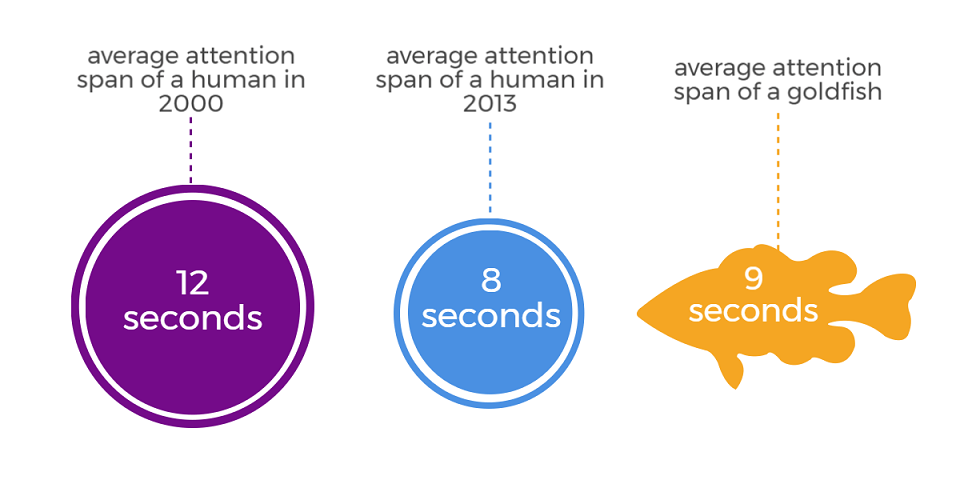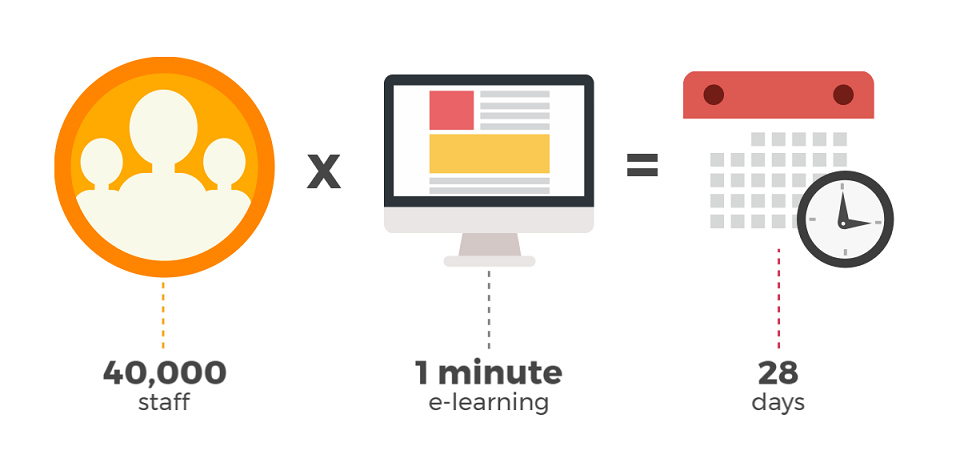Compliance training. Less is more.
July 27, 2017
I came across a phrase recently that beautifully summarises something I’ve been pondering on for a long time, “the modern learner is being asked to drink from a fire hose”.
This creates such a memorable image that I’ve since used it in presentations to help explain one of the biggest challenges we face in the learning world – that the modern learner cannot absorb any more knowledge without a radical rethink of how L&D delivers it to them.
This is all part of a much bigger picture, as journalist Richard Sambrook eloquently puts it. Workplace learning is a mere digital pin prick in the daily fire hose of data being thrown at us.
“IBM say 2.5 quintillion new bytes of data are created every day. No wonder no-one knows anything” – Richard Sambrook
All of us in the learning industry have been partly to blame for this state of affairs. For years we have thrown indiscriminate learning into cyberspace hoping that at least some of it would be swallowed by the right people. But, let’s be honest, we all know that if you overwhelm anyone with anything you may as well be throwing water onto a duck’s back.
The consequence of all this? An unknown proportion of the digital learning delivered by organisations is missing the mark – either it’s not relevant to the audience or they are finding ways around having to learn it – in the way it was intended anyhow.
Compliance training plus lipstick will never be glamorous
The biggest culprit will not surprise you… it’s compliance training. OK, I hear your groans, “Not another post about how to make compliance training more effective”.
No, that has been done to death so I’m not going down that road. Fixing the wavering attention span of hyper-busy professionals needs a lot more than a gamified set of realistic video scenarios with lots of fun thrown in for good measure.
Let’s just accept that we will never be able to dress compliance up in the latest fashion and con our people that they are getting something cool and trendy. But, we still see this being done, again and again, and it needs to change.
There IS a way out of what feels like a one way trip to ‘the brain says no more’ with compliance training but it needs a radical change from the way we do things now. We need to put away the lipstick for starters.
learners are fish like and clever cheats
It’s worth thinking about the recipients of our valiant efforts to spread compliance knowledge. In fact, a big part of the problem we face now is due to us not empathising with our learners enough.
For starters, did you know that human attention span is now lower than a goldfish? According to time.com, it’s official, the average time we can focus on a task is eight seconds, compared to a goldfish who can go all out for nine seconds.

This is evidenced by how learners are reacting to the fire hose we have been pointing at them. With so much choice of what and how to learn they are struggling to make any choice at all – hence very quickly – probably within eight seconds – they either move on or find an easy path through the material you have carefully created for them.
At this point, I challenge you to put yourself in the shoes of a humble learner taking their annual refresher data protection compliance course. The module states it will take 20 minutes but you only have ten.
What would you do? Honest thoughts only, please…
My answer is that a friend of mine – note the clever deflection here – took their annual mandatory training recently. Rather than read the required content, they blindly skipped through all pages unlocked the final assessment, failed first time, but then passed.
It was a result but not what the learning designer had wanted. Cheating? Not in this case but, I’m sure, we’ve all heard stories about much more cunning ways of bypassing the official the path to compliance.
Learners will find short cuts. They do it because they think they know best and they live in an age where everything else around them is personalised. They expect the same from their workplace learning – and so they should.
The regulator is not a learning designer
If you work in L&D in a chunky corporate you will know how hard it is to balance the interests of all parties when delivering compliance training.
- you have the organisation requiring boxes to be ticked for fear of litigation
- you have the learner wanting as painless an experience as possible
- you have the internal policy owner or external regulator breathing down your neck wanting compliance
Who calls the shots in this soup of opinions?
Having talked to many organisations about this delicate relationship, it’s usually the policy owner regulator who defines – quite rightly – who needs to be compliant with what, by when.
But, these otherwise talented people are not learning designers so have little appreciation of learning design and the impact of their decree that superfluous material needs to be presented to the hapless work force.
I think this is the most commonly cited reason for compliance e-learning being tarnished with the dull and copious brush. Our learning designer hands are tied so what else could we do?
Well, the starting point is to look at the impact the cost of this approach is having on your business…
Some simple compliance training maths
If you haven’t done this simple sum yet I suggest you do. We have worked this through with several organisations and the results are quite staggering.
exercise:
- imagine one minute of digital learning needs to be seen by everyone in your organisation
- multiply that by your employee head count to give you the total minutes it would take for it to be consumed
- convert that number to days and multiply that by your average employee daily salary
- this gives you a rough cost of delivering 60 seconds of content across the company
- this cost is normally very surprising and gives you solid ammunition to use in discussions about reducing blanket learning delivery
For example, a major retailer we work with has a global audience of 40,000 staff. To deliver one minute of learning to the entire audience costs the business 28 training days.
Scale that up to an organisation such as Tesco, with 476,000 colleagues and the numbers become huge.
The down time costs can only be guessed at but the numbers are in the tens of thousands of pounds… and this is only a minute of digital learning, not the 20 minutes we often develop.

This gets very interesting when we consider how much time (hence cost) could be saved if 50% of an audience only needed to see 50% of a 20 minute compliance package. The potential saving is significant and if this was repeated again and again it becomes huge.
The secondary benefit concerns the learner (remember them?). We’ve already seen how human impatience is at an all-time high and regressing to more primitive life forms. So why not give learners the ultimate motivator – reduce their required learning to a minimum by giving them only what they need? There is nothing more satisfying than giving someone a bit of their life back.
I don’t think anyone can discount the financial and efficiency improvements we are dealing with here. The next step is to consider how technology can help us do it…
A pragmatic option for new generation compliance training
We’ve seen the problem and explored the challenges and the costs of not doing anything. What about a solution? Is there a way to satisfy all stakeholders and develop a new model for compliance training that does a better job?
Imagine a training delivery solution that created a personalised learning journey for everyone. Each employee in an organisation would be profiled and receive just the compliance training that was relevant to them, based on a whole host of parameters that were known about them.
The cost savings and efficiency improvements of such an infrastructure would be hugely significant. Not to mention how much this would appeal to the goldfish mentality of our audiences and re-engage them with learning.
The technology to create this truly personalised learning is available now.
The biggest hurdle is moving away from the mentality of blanket delivery of annual compliance knowledge which is way out of date. To do this we have to create a new model for content delivery that satisfies the learner, organisation and most significantly the regulator. This will take time but the rewards will be worth waiting for.
Artificial intelligence – ai – will play a huge role in this space in the very near future. We are already working on several ai products, one of which will automatically deliver assessment revision to learners based on their performance in real time.
So watch this space… We’ll explore the opportunities personalised learning offers to revolutionise compliance e-learning – and turn down that fire hose – in future posts.
Got a learning problem to solve?
Get in touch to discover how we can help

